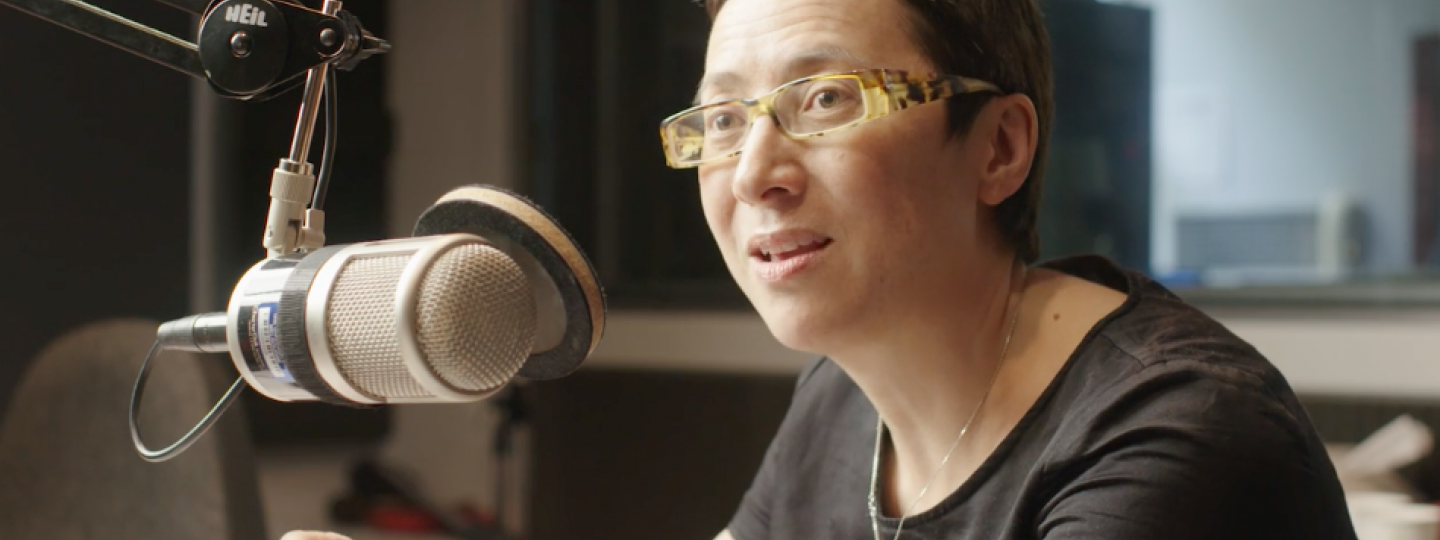"The Masterclass” podcast was born out of perplexity.
When I started teaching audio journalism at the University of Melbourne a year ago, I was bewildered and confused at the lack of good resources. When I began looking through textbooks teaching audio journalism, I was surprised to find many of them peppered with URLs. Given that I myself could hardly be bothered to painstakingly copy out web addresses, I found it hard to believe any student would go to the trouble. My next step was to look for a teaching podcast. When I couldn’t find one, I decided to make one myself.
I’m a radio journalist by trade; having worked at NPR and the BBC for 15 years, I know some of the most innovative audio journalists in the business, and I decided to enlist them to take part in my podcast. The idea was simple: Every week one audio journalist would talk through a single skill, introducing examples of their own work to showcase exactly how it’s done.
We spoke to journalists from across the world, including NPR’s Robert Smith on story structure, the BBC’s Neal Razzell on how to use sound and WNYC’s Manoush Zomorodi on audience engagement and interaction. Frankly it was one of the most pleasurable projects I’ve ever worked on, since audio journalists excel at talking, and are passionate about journalism. So here’s what my team learned about making a teaching podcast, in five easy lessons.
Build in tasks and incentives to listen
Getting students to do the set reading has always been a struggle, so I was keen to try to flip that script. I wanted to provide something educational, but also so interesting that learning is a pleasure rather than a chore. I chose the flipped classroom format — where students listen before class — and asked each interviewee to set a task, using the skills they had been discussing, for listeners. In this way, students are required to listen; if they don’t, they’ll find it hard to complete the task, which we discuss in class. The first week, where students had to identify and post a favourite minute-long piece of audio with a short explanation, produced an extraordinary range of wonderful audio, collected together in bite-size form. In this way, my aim is to help those who aren’t so keen on the medium develop the habit of listening.
Work in mixed ability teams
For me, the most valuable part of this project was working in a small team with differing experience levels. My editor, Buffy Gorrilla, graduated from our master’s program last May and has been working on a commercial podcast, so has great editing skills, but little experience at sound design. Our third team member, Ruby Schwartz, helps produce a podcast, but has limited field experience. They often acted as the proxy for students, ensuring we were covering the most basic, ground-level skills. When we began working together, I had only the haziest idea of how the podcast would sound, and it was through brainstorming as a team — with a focus on the student experience — that we hit upon some of the key features of the podcast. These include having guests give Two Top Tips to act as a summary of the episode, as well as setting a task to reinforce active learning. As we put the episodes together, there was a moment when the power dynamic shifted, and my team frogmarched me back into the studio, telling me to redo my voice tracks, which they had decided were “too read-y” and not conversational enough. They were right.
Model best practice
Modeling best practice is intuitive when your mantra is Learn Through Listening. But when it comes to making a podcast, it’s also a gigantic hassle. Our biggest hurdle was recording in good sound quality, and this was magnified by the fact that many of the journalists we wanted to interview were in different time-zones. It would have been easy to do interviews down skype lines, but the sound quality is still worse than ISDN, so we begged our interviewees to cajole their way into empty studios at antisocial hours of the day and night, while shamelessly bribing our good-natured studio engineer Gavin Nebauer from the Horwood Studio with meals out. We did not regret this. When it came to editing, modeling best practice became a huge burden, especially with the belated realization that every single one of our interviewees would intuitively notice any poor edits. We listened to repeated edits of each episode until we dreamt of them, but we were constrained by a tight schedule and a tiny budget.
Let’s keep learning!
This corny slogan — which Buffy lobbied persistently and unsuccessfully for — has ended up underpinning much of our experience. I am already the co-host of a podcast on China — "The Little Red Podcast" — so I thought I knew all about podcasts, but "The Masterclass" turned out to be a fairly meta learning experience. We exploited our access by interviewing journalists about our own challenges in making the podcast. One of our biggest challenges was sound design. Initially we commissioned a theme tune from our composer, Susie Wilkins, by giving her a three-word prompt describing our values: Authority, Clarity, Curiosity. We liked the result so much we decided to commission more music, as we decided it helps keep listeners’ attention. But when it came, we decided it was too feminine, so we commissioned more “manly” versions of the underscore. Even so, we still struggled. At one meeting, just as we were finishing scoring an episode, we received an email from Radiotopia’s Julie Shapiro with the line, “My unwavering advice in this realm: usually less is more!” We immediately removed almost all the music from that episode.
A manifesto for journalism
While our interviewees talked through specific audio skills, they often ended up voicing what amounts to a manifesto for great journalism. One line I wish I’d heard much earlier in my career came from Natasha Mitchell, who hosts the “Science Friction” show on Australia’s ABC, “I simply refuse to be intimidated by complex information,” she told us. “I love reading complex information and trying to figure it out, understand it. That’s kind of what you do.” Another moment that stands out was when Hamish Macdonald – an Australian journalist known for his tough questioning of politicians – offered an elegant defense of the adversarial political interview by contrasting it with the politics of platitudes he witnessed during the U.S. election campaign. “That deference that is offered to the President is also offered to people that are running for presidency, and you just saw it time and time again,” he said. “All I could think was how different would the election process be, if these candidates were actually held to account and tested on their policy positions.”
Such reflections mean that "The Masterclass" is finding an audience away from the classroom, and we’ve been surprised at the messages we’ve received from experienced journalists. Maybe it’s because of this podcast moment, but many print reporters and photojournalists have told us how useful the podcast has been to them. As a team, we’re now plotting how to fund a second season. As for the student feedback, it’s been overwhelmingly positive.
However, perhaps the most memorable line was also the most prosaic, from a student, who after listening to the first episode, wrote, “I did get the sense that it was a lot of effort for a 20 min introduction.” Indeed, it was.
You can find all of the classes on Soundcloud.








